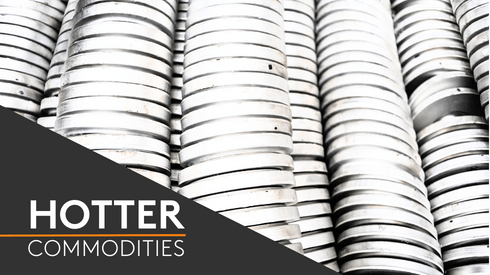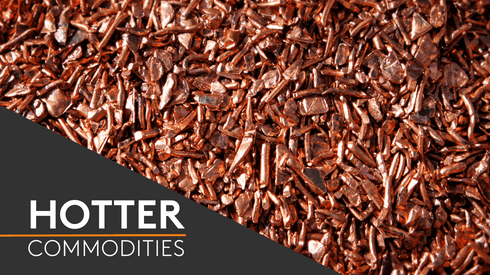The webinar featured Fastmarkets experts Beth Lis, Alejandro Mata Lopez, Rafael Barisauskas, Derek Mahlburg and Jonathan Rager. Get a detailed understanding of the issues: watch the webinar recording.
This webinar will provide valuable insights and a preview of what you can expect at the Forest Products North America Conference & International Containerboard Conference 2024 this October 28-30 in Chicago.
To watch the full webinar replay, simply fill out the form here.
Demand still down after pandemic containerboard bubble bursts
Mahlburg – Fastmarkets’ director for North American graphic paper and packaging – opened the panel discussion, noting how US corrugated box demand is still struggling to recover after dropping sharply at the beginning of 2022. Demand is now down to 2017 levels.
He cited inflation as a major cause, but also talked about how corrugated box numbers have become uncoupled from wider retail demand, which is now steadily rising.

Barisauskas then took up the topic, stating that the picture in Latin America – the region he covers as Fastmarkets’ senior economist – looks similar to the situation in the US.
He said: “In general, ‘23 was a very weak year for the region, because most of the governments had already lifted all those [post-Covid] stimulus packages, but also because of some negative weather effects on other markets, especially in the Indian zone. We did have problems with El Niño affecting crops…and this definitely reduced consumption for the whole industry.”
However, with El Niño now gone, a healthier agriculture sector is fueling greater demand.
As Fastmarkets’ director for European packaging and graphic paper, Mata Lopez noted poor European containerboard demand was partly caused by geopolitics (and associated conflicts). He said: “Wars are happening nearby, creating a lot of headwinds from a macroeconomic point of view. That has definitely had an effect on containerboard demand.”
But he also talked about the influence of poor consumer confidence and Asian companies like Alibaba stealing European market share. He said: “In Europe, we’re also seeing, gradually, Asian ecommerce companies like AliBaba taking more and more of the market share. And that, of course, is shifting some of the demand for containerboard away from Europe.”
Finally, Lis – vice president, Asian paper and packaging – gave her thoughts on demand in Asia. She said non-Chinese markets are performing a little better due to inflation, but the overall picture is sluggish growth.
Overcapacity issues – and their causes
Globally, containerboard overcapacity stands at 22 million tonnes, with Asia responsible for nearly 70% of that.
However, Europe also has 3.6 million tonnes of overcapacity, with operating rates at historic lows. Mata Lopez said: “Operating rates really started to come down in ‘22 and continued to come down in ‘23 – to a very low level. Actually, a level that we have not seen in Europe, ever before. The reasons for this have to do with over-investment in capacity.”
He explained that this over-investment in capacity is partly due to sustainability efforts. But it’s also been caused by some graphic paper producers switching over to containerboard.
Lis outlined how Asian overcapacity is partially driven by Chinese companies wanting to maintain their market share at the expense of profit margins. She also cited low interest rates and other incentives for investing coming from the government.
According to Barisauskas, Argentina’s economic downturn has deeply affected operating rates in Latin America – as have more containerboard projects in Brazil.
At the same time, Mexico’s proximity to the US has seen US imports drive down operating rates in Mexico (and Latin America as a whole). Peso/dollar exchange rate fluctuations are also playing a part, reducing domestic supply and driving prices up slightly.
North of the border, operating rates are closer to pre-pandemic levels. According to Mahlburg, North America has ‘stronger prospects to get back to normal levels’. He said: “Producers have matched their capacity to new demand realities. In North America, producers are taking more of a wait-and-see approach.”

Inflationary impacts
Next, Lis spoke about how high inflation in the US has had a particularly significant knock-on effect in Asia. She said: “I think of it as a double-edged sword. Because it impacts the real demand, obviously, and it impacts the costs of packaging.”
Referencing native inflation in Asian markets, she said: “It’s coming under better control, towards the 2% levels. China’s been very different to the rest of the region, just because of its relatively poor economic performance. Its inflation has actually been quite low.”
With decreasing inflation (and government infrastructure spending), Asian markets will be hoping for an uptick in demand.
In North America, meanwhile, Mahlburg said that consumer wages vs inflation is the metric to watch – for its influence on demand. He also emphasised the growing importance of OCC on containerboard markets.

Bringing production home
Barisauskas detailed how many US companies are relocating production closer to home, on the northern Mexican border, primarily to head off future supply chain issues. Added bonuses for these companies are reduced transportation costs and incentives supplied by the Mexican government.

EUDR uncertainty
Bringing the focus back to Europe, Mata Lopez spoke about the potential challenges posed by EUDR:
- Lower GDP growth
- Higher inflation
- Greater demand for recycled products
In North America, Mahlburg not only sees a lift in recycled products demand as a result of EUDR. He also speculated that some American mills might be unable to do business in Europe – if they can’t track where all their fiber and residual materials come from.
Brazil has called for a delay to EUDR regulations. Although Barisauskas pointed out that it’s already more prepared than many countries exporting to Europe. He said: “Brazilian legislation is quite strict in terms of land occupation and deforestation, so they already consider themselves very well positioned.”
At the same time, he cautioned that Brazil needs to be careful of indirect effects. For example, it exports large volumes of material for food packaging to Latin America, which then goes to Europe. It’s these exports, he said, that might come under scrutiny.
M&A outlook
On the topic of M&A, all the experts agreed that they expected recent activity to continue, especially where oversupply isn’t allowing for organic growth. They all thought vertical integration would prove to be a popular route.
Watch the webinar replay to find out more
Watch the webinar recording to get all the insights. And visit our dedicated market pages for more details on containerboard, recovered paper and forest products prices.
If you’re interested in learning more about containerboard market, fill out the form to access the webinar replay. This comprehensive session provides in-depth insights and expert opinions, offering valuable information for anyone looking to explore this market.







